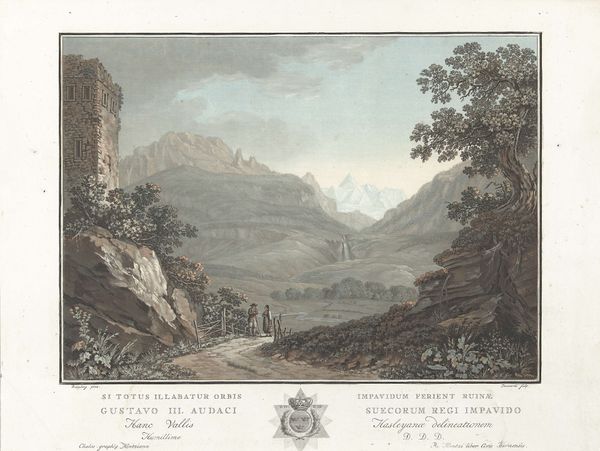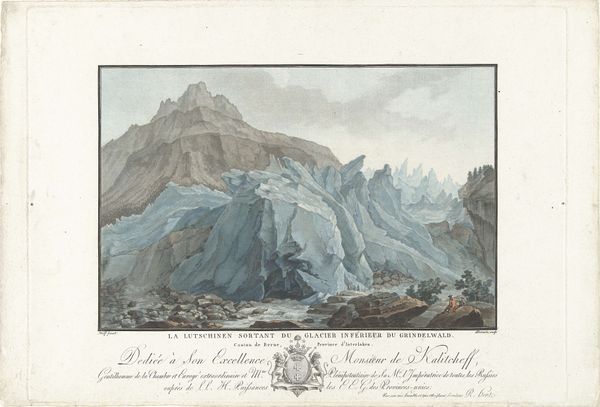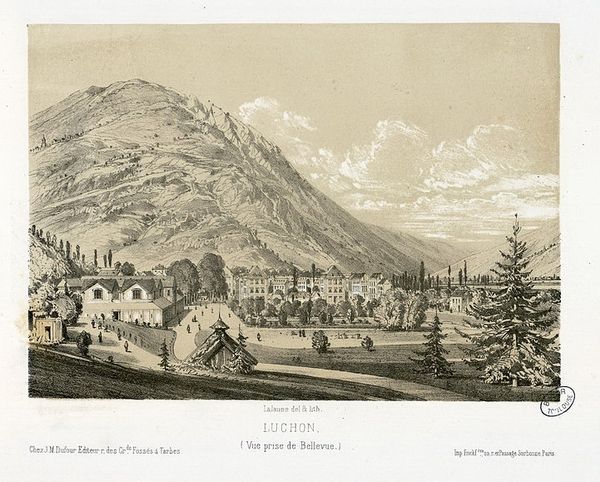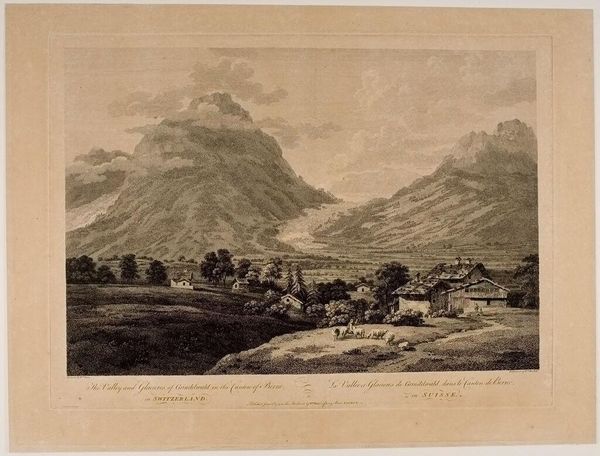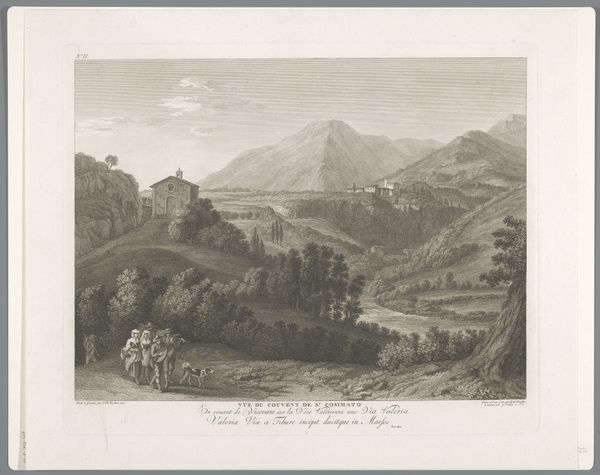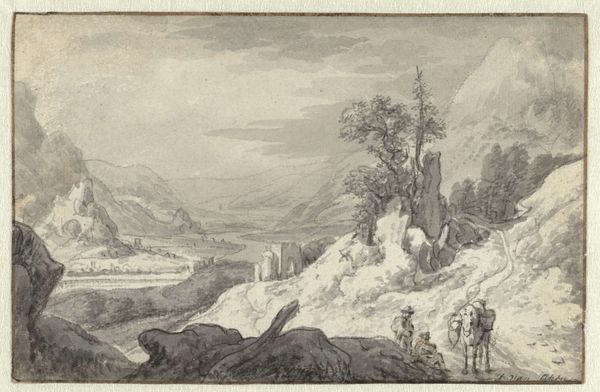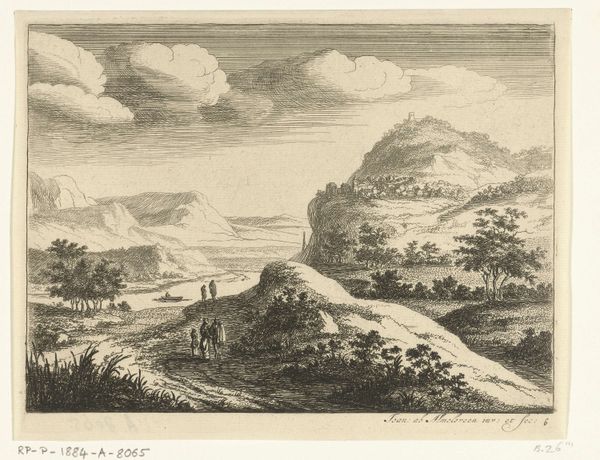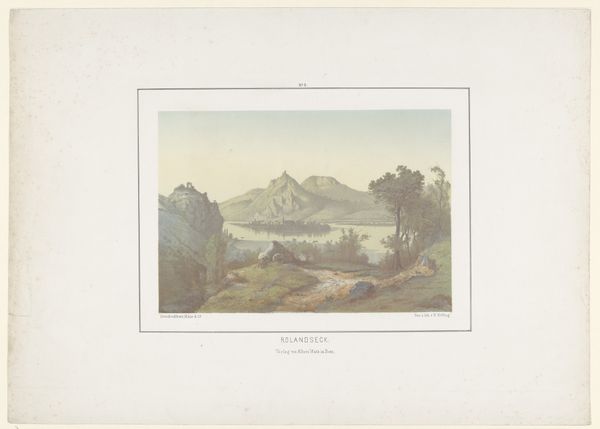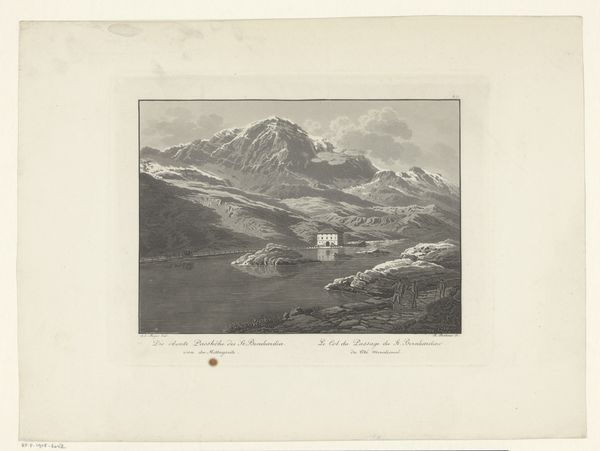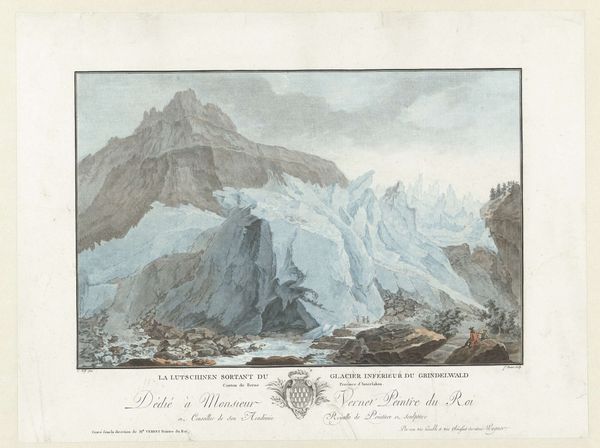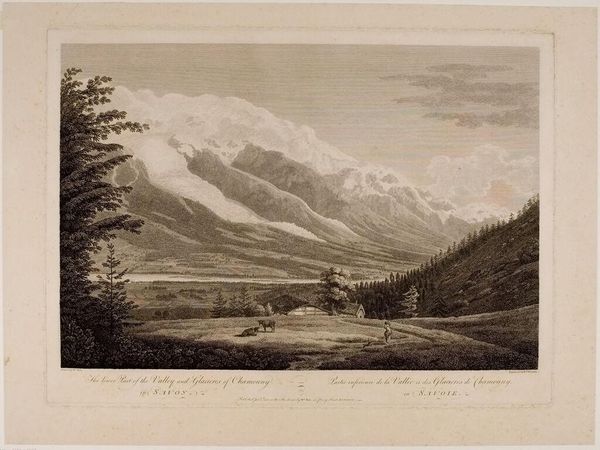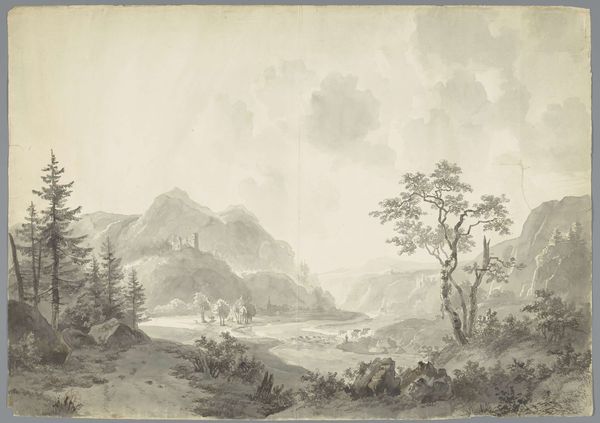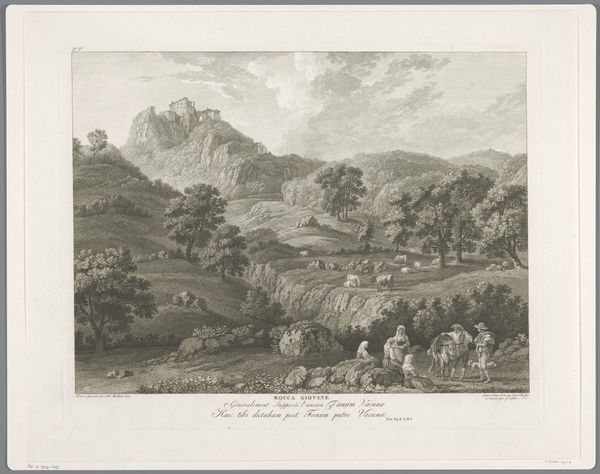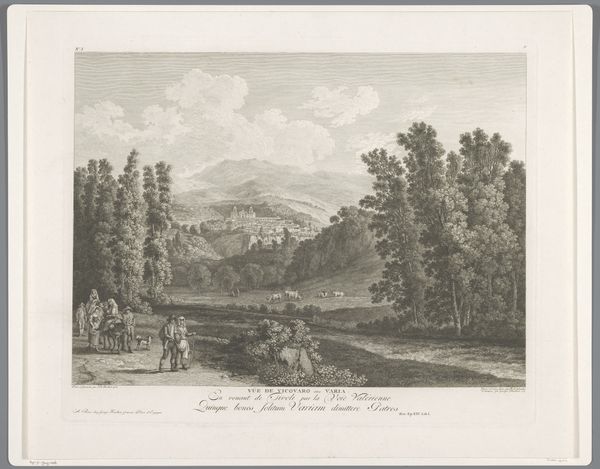
Dimensions: height 313 mm, width 443 mm
Copyright: Rijks Museum: Open Domain
Editor: This is a print from sometime between 1763 and 1785 called "Gletsjer bij de vallei van Grindelwald," by Charles Melchior Descourtis. It looks like it's made using aquatint and etching, and it depicts a landscape in the style of Romanticism. It’s pretty grand, and also a bit unsettling with those huge mountains looming over everything. What’s your take on it? Curator: Well, you've touched on something crucial right away. Look at how tiny the figures are at the bottom right; like afterthoughts. This work feels very much about the sublime, that slightly terrifying awe we feel in the face of nature's immensity. Does the composition remind you of other landscapes you have seen, or perhaps paintings with biblical narratives? Editor: I guess I see what you mean! I suppose it reminds me a little of some old biblical landscapes – all powerful, with humans barely holding their place. But why focus on such a grand subject at that time? Curator: This piece appeared during an explosion of scientific curiosity but also a hunger for dramatic landscapes among the European educated elite. Think of the Romantic movement building: Nature wasn't just background; it reflected our inner emotional landscape. Plus, these grand tours were becoming all the rage – a new audience keen to see "exotic" places at home, safely, on paper. That the print medium afforded multiple copies and relatively cheap cost enabled far reaching distribution makes this so culturally valuable! Isn't it intriguing to consider who the intended viewers would have been and why? Editor: That context really brings the artwork to life for me. It's more than just a picture; it’s a window into a whole cultural moment! Thanks! Curator: My pleasure! These prints remind us that art doesn't just exist; it speaks volumes about the era that produced it. I learned a new approach to consider works outside of a formal art historical setting; thinking through the viewer makes me realize how many readings may be missing from our present assessment!
Comments
No comments
Be the first to comment and join the conversation on the ultimate creative platform.
